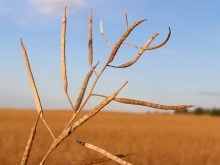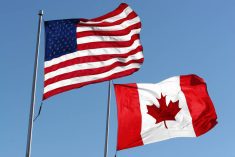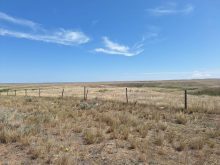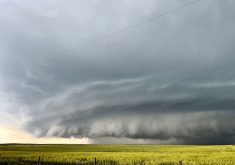‘Don’t want to alarm anybody’ | Above average runoff conditions are expected for the agricultural area and very high runoff in pockets
Saskatchewan water officials are predicting high potential for flooding this spring and urge residents to prepare.
However, they say the flooding potential is less than it was in the record flood of 2011, when late spring rain overwhelmed already saturated soil and devastated parts of southeastern Saskatchewan.
“We don’t want to alarm anybody at this time but we want everyone to take the precautions necessary,” said Ken Cheveldayoff, minister responsible for the Water Security Agency.
The agency’s forecast released March 11 suggests above average runoff conditions across the agricultural area.
Read Also

Research looks to control flea beetles with RNAi
A Vancouver agri-tech company wants to give canola growers another weapon in the never-ending battle against flea beetles.
Pockets with well above normal runoff potential are near the two largest cities.
“In the Moose Jaw to Indian Head area, the Qu’Appelle Valley, and the area south of Prince Albert in between North Battleford and Saskatoon there is the potential for very high runoff,” the minister said.
These areas saw more than twice as much snow as normal, and a larger area including Melville, Weyburn, North Battleford and Gravelbourg saw up to twice as much.
The snow also contains between 150 and 200 percent more than the normal amount of water, Cheveldayoff said.
However, officials say flooding potential is less than it was in 2011.
“Even though there’s a lot of snow out there, the areas of really high snow are smaller than they were in 2011,” said John Fahlman, director of hydrology and ground water services with the WSA.
Dry soil conditions last fall throughout all agricultural areas except the northeast also help.
On the flip side, the rate of melt and spring precipitation are both unknown and will contribute to the chances of flooding.
Gina Ressler, meteorologist with The Weather Network, said the three-month outlook for the Prairies indicates precipitation for most regions should be near normal.
Several small areas will see above normal precipitation, however.
“We’ve got this area through western Saskatchewan and up into northern Saskatchewan where we’re expecting above normal precipitation for the next couple of months and that has to do with the storm track that we’re expecting to continue into the spring,” she said.
The active weather of January, February and early March is expected to continue, she said.
Another area near Winnipeg is also expected to see above normal precipitation related to storms and moisture from the south but Ressler said that is a little more uncertain.
March is often the snowiest month in southern Alberta, she added, and active weather will continue.
In terms of temperature, spring should be typical with temperatures averaging out at normal.
“We’ll still probably continue to see the swings in temperatures so maybe some cold spells but balanced by some warmer spells as well,” Ressler said.
Fahlman said a rapid, late melt poses the most risk of flooding.
The agency has been drawing down various reservoirs to create more water storage.
On the Souris River system, where extensive flooding wiped out much of the village of Roche Percee in 2011, above normal runoff is expected and the three reservoirs on the system — Boundary, Rafferty and Alameda — are being managed with a view to storage.
Rafferty is expected to refill above its fully supply level, he said, but not to its maximum storage level.
Alameda is not being drawn down further, and is projected to rise about three metres this spring to two metres above its full supply level.
The Qu’Appelle River system will likely see flows similar to 2011 due to the existing snow pack. High water levels are also expected on the Moose Jaw River, Wascana Creek, and the Quill Lakes.
The forecast says it is too early to predict flows on the Saskatchewan River system.
Government officials have been meeting with urban and rural municipalities to make sure they are prepared. Cheveldayoff said many lessons were learned from the floods of 2010 and 2011. Since that time, more than $25 million has been spent on 580 permanent flood mitigation works.
“Overall, we are much better prepared than we were two years ago in the event that flooding does occur in certain areas,” he said.
Sandbags, sandbagging machines, Hesco flood barriers, pumps and other equipment will all be available, if necessary, from the government relations ministry.
Cheveldayoff added that the WSA is developing a mobile app to make sure information is available to smart phone and tablet users.


















